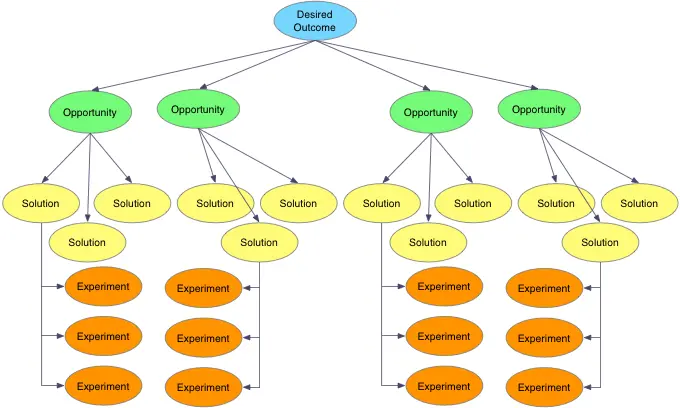Mastering Stakeholder Engagement: Co-Creating Solutions for Product Managers
Product managers often struggle to gain buy-in from stakeholders and encounter resistance when presenting their solutions. This is because they tend to focus solely on delivering final answers, without involving stakeholders in the ideation process.
Introduction
We all find comfort in getting the right answer. Product managers typically advocate for their point of view in meetings with stakeholders and tend to resist suggestions for change. When asked to build something different than what they suggested, they complain to whoever will listen.
It means product managers create the problems they have with stakeholders. By only presenting the final answers, they ask stakeholders to give their opinions about these answers, and not about the rationals that led to them, so it shouldn’t be surprising if they don’t agree with us.
Therefore, it’s critical to provide data, key figures for return on investment, and comprehensive business cases with answers. An increased stakeholder engagement comes with this means there is also an increased likelihood that you run into the trap of “mine vs yours” ideas.
How do you engage in high-stakes conversations with stakeholders when there is “not one best idea”?
To improve stakeholder engagement and gather better feedback, product managers must shift their approach and provide opportunities for stakeholders to contribute and participate in the decision-making process. In this article, we will explore effective strategies for co-creating solutions with stakeholders and obtaining their buy-in from the early stages of product development.
Co-Creating with Stakeholders
To foster stakeholder engagement, product managers should share their thinking early on and seek input and feedback from stakeholders. This collaborative approach enables the co-creation of the best product ideas while leveraging the expertise of stakeholders. Rather than striving to prove their own solutions as the definitive answer, product managers should create a workshop-like environment that encourages visual thinking and externalizes ideas for examination and critique.
Click to Tweet
One effective framework for visual thinking and co-creation is the Outcome-Opportunity-Solution-Experiment (OOSE) tree. This tool facilitates structured discussions by focusing on desired outcomes and guiding the exploration of opportunities, solutions, and experiments.
 The tool visually presents all of the options you could take and exposes the best path to reach the desired outcome.
The tool visually presents all of the options you could take and exposes the best path to reach the desired outcome.
Let’s explore each step of the OOSE tree framework in detail:
1. Desired Outcome
Engage stakeholders in discussions about the business outcomes that create value for customers and the organization, rather than solely focusing on product features. By aligning with stakeholders on desired outcomes, product managers can establish a shared understanding of the end goals.
For example, a desired outcome could be to “Increase engagement” with the product.
2. Opportunities
Identify and capture opportunities within the problem space based on generative research. These opportunities may arise from customer needs, pain points, desires, or areas where positive intervention is possible. By involving stakeholders in this process, product managers can gather valuable insights and diverse perspectives.
For instance, opportunities could include “Engage with stories” or “Share more stories” to enhance user engagement.
3. Solutions
Encourage stakeholders to contribute potential solutions that are bounded by the identified opportunities. Product managers should welcome ideas from all sources, emphasizing that the focus should remain on solving the problem at hand. Solutions should be aligned with the identified opportunities and can come from stakeholders, team members, or external sources.
An example of a solution could be to “highlight past stories to share,” directly tied to the opportunity to “Share more stories.”
4. Experiments
Promote a culture of experimentation by planning and conducting tests to evaluate and refine proposed solutions. Experiments should focus on validating the riskiest assumptions behind the solutions, rather than testing the entire solution at once. By allocating a dedicated space on the OOSE tree for experiments, product managers can encourage focused and iterative testing.
This approach prevents over-reliance on A/B tests and promotes a more comprehensive exploration of potential solutions.
Mistakes in Sharing Research With Stakeholders
To effectively engage stakeholders, product managers must also avoid common pitfalls when sharing research findings. Here are some mistakes to steer clear of:
1. Recording Interviews
Avoid emailing stakeholders raw recordings of interviews. Lengthy and unedited recordings are unlikely to be listened to or understood effectively.
2. Sending Interview Notes Simply sharing interview notes without context or explanation can lead to misunderstandings. Stakeholders may struggle to make sense of the information without having been present during the interviews.
3. Relying Solely on Research Decks
While research decks can be valuable, relying solely on them for stakeholder meetings may result in low attendance. It’s crucial to create an engaging and interactive environment that encourages stakeholders to actively participate.
4. Selective Research Sharing
Product managers should refrain from sharing research selectively to support their own arguments. This approach erodes trust and credibility among stakeholders. Instead, be transparent and share research findings, even if they may challenge your initial assumptions. Encourage an open dialogue where stakeholders can contribute their own anecdotes and insights, fostering a collaborative environment.
Wrapping it up
In conclusion, successful stakeholder engagement for product managers involves a shift from a “right answer” mentality to a co-creation mindset. By involving stakeholders in the ideation process, product managers can leverage their expertise and ensure better alignment with desired outcomes. The OOSE tree framework provides a structured approach for collaborative discussions, guiding the exploration of opportunities, solutions, and experiments.
Remember to avoid the common mistakes of sharing research without context or selectively using findings to support predetermined conclusions. Instead, create an inclusive environment where stakeholders feel valued and encouraged to contribute their perspectives.
By adopting these strategies, product managers can foster stronger stakeholder engagement, gain valuable feedback, and ultimately increase the likelihood of buy-in for their solutions. Embrace the power of co-creation and leverage the collective intelligence of stakeholders to drive the success of your product.